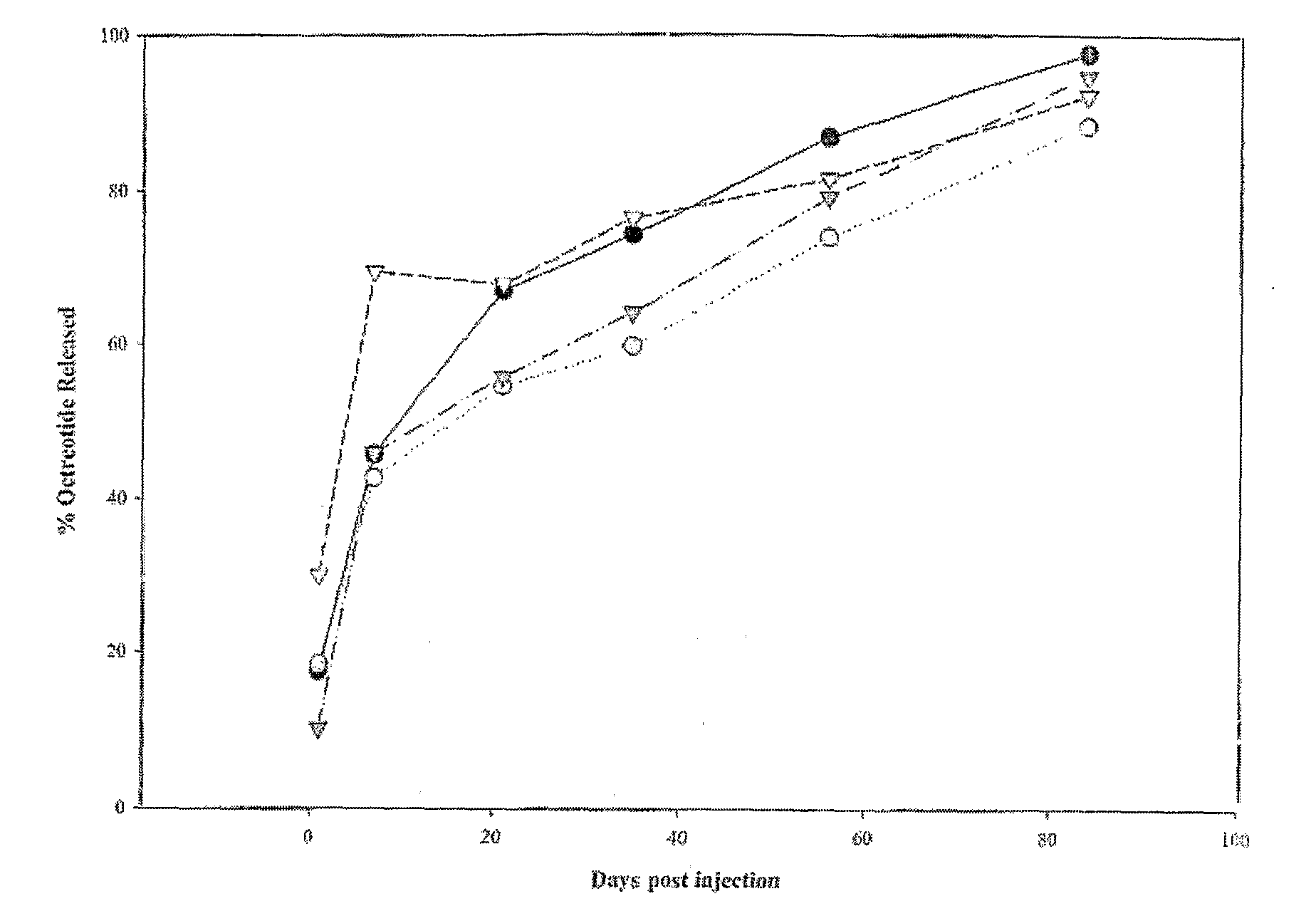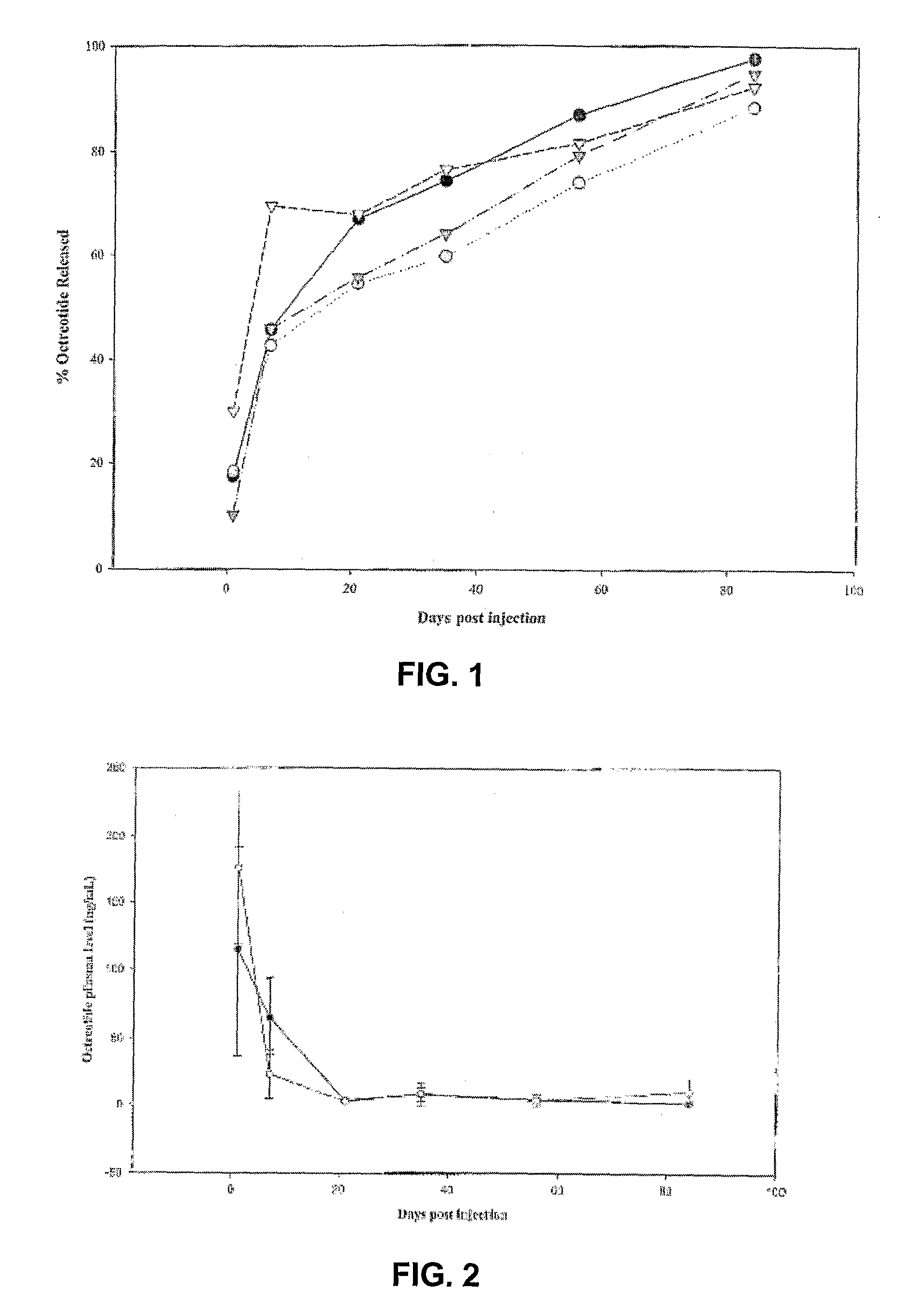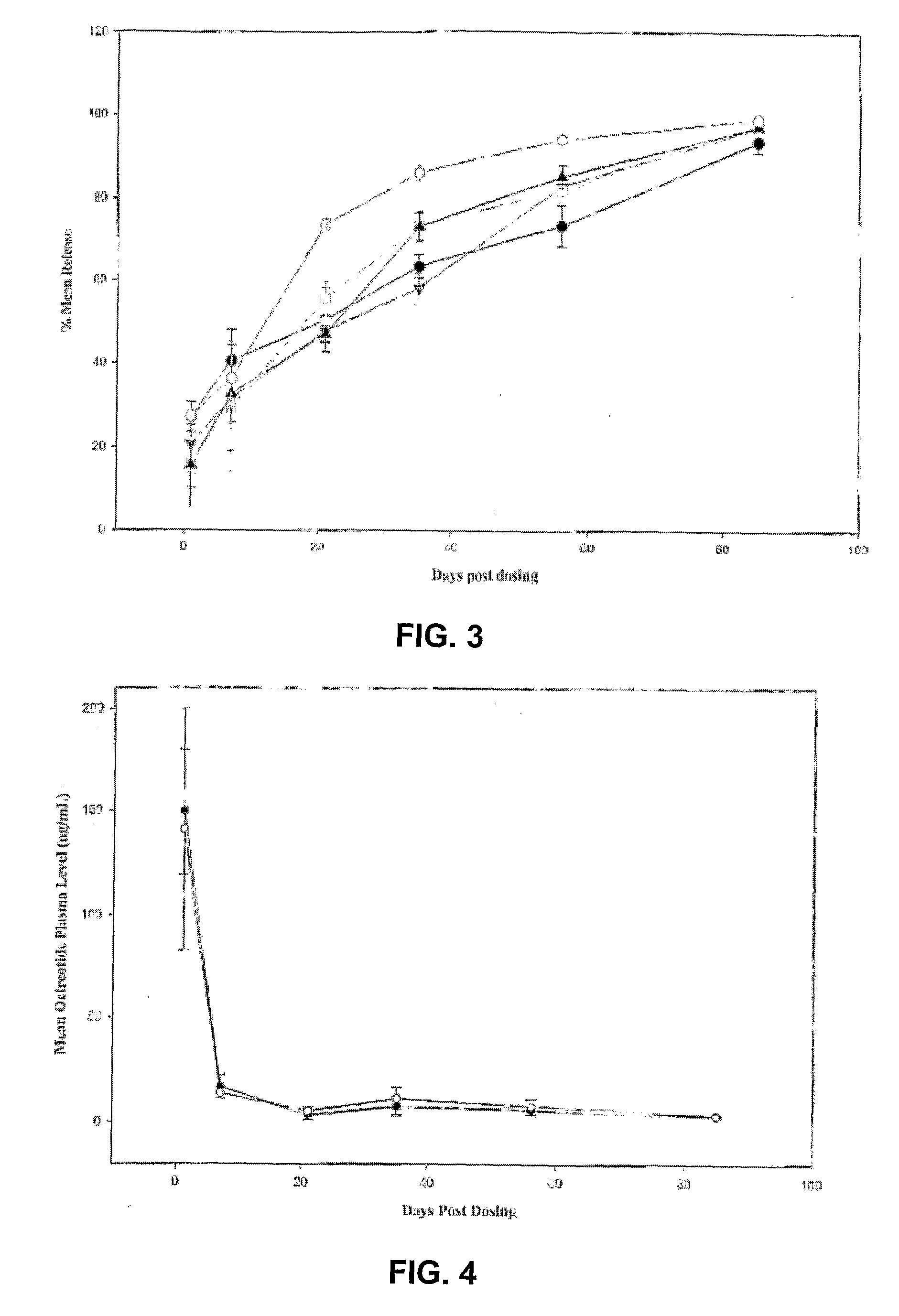Sustained Delivery Formulations of Octreotide Compounds
a technology of octreotide and formulation, which is applied in the direction of drug composition, peptide/protein ingredient, metabolic disorder, etc., can solve the problems of lack of sustained blood level, short action time, and significant variation in blood level, so as to reduce the risk of permanent tissue damage, no risk of muscle necrosis, and high bioavailability
- Summary
- Abstract
- Description
- Claims
- Application Information
AI Technical Summary
Benefits of technology
Problems solved by technology
Method used
Image
Examples
example 1
Evaluation of the 84-Day Release Kinetics of Four ATRIGEL® Formulations Containing 12% Octreotide Citrate Following a Single Subcutaneous Administration in Male Rats
Summary
[0244]The purpose and primary objective of this study was to evaluate the 84-day release kinetics of four modified ATRIGEL® formulations, containing 12% octreotide citrate administered subcutaneously (SC) in rats utilizing implant retrieval and subsequent reversed phase high performance liquid chromatography (RP-HPLC). A secondary objective was to collect blood for plasma analysis of octreotide. A final objective was to evaluate test sites macroscopically for tissue reactions and test article (TA) characteristics.
[0245]In this 84-day study, four ATRIGEL® formulations were tested in one hundred and twenty male rats with thirty rats per treatment group. On Day 0, each animal received one 100 μL (approximate) SC injection of appropriate TA containing approximately 12 mg octreotide citrate in the dorsal thoracic (DT) ...
example 2
Evaluation of the 85-Day Release Kinetics of Six ATRIGEL® / Octreotide Formulations Following a Single Subcutaneous Administration in Male Rats
Summary
[0271]The purpose and primary objective of this study was to evaluate the 85-Day release kinetics of six modified ATRIGEL® / Octreotide formulations administered subcutaneously (SC) in rats, utilizing implant retrieval and subsequent reversed phase high performance liquid chromatography (RP-HPLC). A secondary objective was to collect blood for possible future plasma analysis of octreotide. A final objective was to evaluate test sites macroscopically for tissue reactions and test article (TA) characteristics.
[0272]In this 85-Day study, six ATRIGEL® / Octreotide formulations were tested in one hundred and eighty male rats with thirty rats per treatment group. On Day 0, Groups I, III, IV, V, and VI received one 100 μL (approximate) SC injection of appropriate TA containing approximately 9.6 mg octreotide in the dorsal thoracic (DT) region. Grou...
example 3
Evaluation of the 99-Day Release Kinetics of Three ATRIGEL® / Octreotide Formulations Following a Single Subcutaneous Administration in Male Rats
Summary
[0304]The purpose and primary objective of this study was to evaluate the 99-day release kinetics of three modified ATRIGEL® / Octreotide formulations administered subcutaneously (SC) in rats, utilizing implant retrieval and subsequent reversed phase high performance liquid chromatography (RP-HPLC). A secondary objective was to collect blood for plasma analysis of octreotide. A tertiary objective was to evaluate test sites macroscopically for tissue reactions and test article (TA) characteristics.
[0305]In this 99-day study, three ATRIGEL® / Octreotide formulations were tested in one hundred and thirty-five male rats with forty-five rats per treatment group. On Day 0, each rat received one 100 μL (approximate) SC injection of formulation containing approximately 12 mg, 13.5 mg or 15 mg octreotide in the dorsal thoracic (DT) region. On Days ...
PUM
| Property | Measurement | Unit |
|---|---|---|
| Time | aaaaa | aaaaa |
| Time | aaaaa | aaaaa |
| Time | aaaaa | aaaaa |
Abstract
Description
Claims
Application Information
 Login to View More
Login to View More - R&D
- Intellectual Property
- Life Sciences
- Materials
- Tech Scout
- Unparalleled Data Quality
- Higher Quality Content
- 60% Fewer Hallucinations
Browse by: Latest US Patents, China's latest patents, Technical Efficacy Thesaurus, Application Domain, Technology Topic, Popular Technical Reports.
© 2025 PatSnap. All rights reserved.Legal|Privacy policy|Modern Slavery Act Transparency Statement|Sitemap|About US| Contact US: help@patsnap.com



